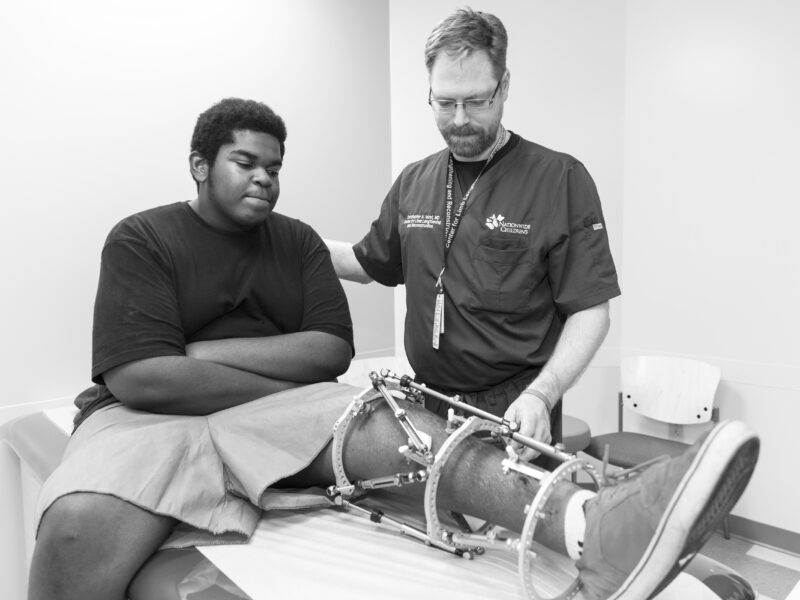Most Seymour Fractures Can be Effectively Treated in the Emergency Room
Most Seymour Fractures Can be Effectively Treated in the Emergency Room https://pediatricsnationwide.org/wp-content/themes/corpus/images/empty/thumbnail.jpg 150 150 Katie Brind'Amour, PhD, MS, CHES Katie Brind'Amour, PhD, MS, CHES https://pediatricsnationwide.org/wp-content/uploads/2021/03/Katie-B-portrait.gif- June 19, 2019
- Katie Brind'Amour, PhD, MS, CHES
After decades of unclear optimal management for Seymour fractures, evidence suggests orthopedic surgeons need not treat all of these cases in the operating room.
Seymour fractures — open fractures of the distal phalanx with a juxta-epiphyseal pattern — were long managed nonsurgically following their namesake’s landmark study from the 1960s that asserted the risks of surgery. Over time, however, surgeons shifted toward surgical management in the operating room, hoping to prevent long-term problems, such as growth plate arrest and infection, by better extracting the skin or nail bed that gets trapped in the fractured bone.
As infection rates and nail deformities decreased with this surgical approach, clinician-researchers at Nationwide Children’s Hospital began to adopt alternative management approaches to reduce the burden, stress and expense related to operating room treatment while simultaneously improving outcomes for children.
“We were treating all of these fractures emergently in the operating room. We see a lot of these cases, so we thought, ‘Why don’t we train the residents to do it in the emergency room setting?’” says James Popp, MD, a pediatric orthopedic hand surgeon and director of the Hand and Upper Extremity Program at Nationwide Children’s. “It really is a fairly simple surgery, and the fracture can be reduced appropriately in the emergency room under conscious sedation or a nerve block.”
Julie Samora, MD, PHD, director of Orthopedic Quality Improvement and a pediatric orthopedic hand surgeon at Nationwide Children’s, worked with Dr. Popp and the Hand and Upper Extremity Program team to develop a full-blown training program offering yearly education on the identification and treatment of Seymour fractures. Senior residents, or junior residents under their direct supervision, now manage the vast majority of these fractures in the hospital’s emergent care settings, deferring acute operating room management to special circumstances only, such as chronic fracture, the presence of additional lacerations or injuries, or the presence of significantly unstable or grossly contaminated fractures that require formal surgical debridement and stabilization.
“When we realized we were doing something fairly unique at Nationwide Children’s — and in numbers far greater than any of us had seen in the literature — we decided to retrospectively analyze outcomes for our patients and share the results,” says Dr. Popp, a co-author on the hand team’s recent publication detailing their findings.
Sixty-five patients treated from 2009 to 2017 had complete records eligible for analysis, with a mean patient age of 10 years. In line with the standard of care at Nationwide Children’s, 58 children (89 percent) were managed surgically in the emergency room. The remaining seven children required initial management in the operating room, mostly due to material lodged in the fracture site or the severity of the crush injury preventing a stable closed reduction.
Overall, complications were minimal. All children were prescribed an antibiotic (mostly oral cephalexin) for infection prevention, six of whom developed subsequent (mostly superficial) infections. Four patients (7 percent) initially managed in the emergency department required unplanned surgery due to unstable reductions or re-displacement of their fracture fragment identified at follow-up visits.
“When emergency physicians and orthopedic residents are trained to identify and treat Seymour fractures in the emergency room, we have proven it is safe for them to do so,” says Dr. Popp. “But recognition of this type of injury is the key point here, since it can be easily overlooked.”
Drs. Popp and Samora and their fellow physician-scientists have another retrospective study underway to examine management and outcomes of chronic Seymour fractures — cases that arrive for treatment more than 24 hours after the injury, often because they are missed on original examination. Missed Seymour fractures can result in chronic infection, permanent disfigurement of the nail, or amputation of the finger.
In some cases, a small cut or a bit of blood near the tip of the finger may be the only visible sign, but unusual nail appearance or bone alignment on physical examination or X-ray are common clues that a Seymour fracture has occurred. Understanding that the nail bed can be trapped in the fractured bone — and that it can be addressed via a simple incision, removal of the tissue, and reduction in the emergency department — may enable most children to avoid the delay, expense, and potential complications of full surgical treatment in the operating room.
“Emergency room physicians can learn to recognize and treat these cases in the emergency room or through referral to a facility like Nationwide Children’s, and they can do it safely and at a much lower cost for all involved. Most importantly, we’ve shown that kids do really well with this approach,” says Dr. Popp. “We hope our experience may change the way people handle Seymour fractures in the future to improve kids’ lives.”
Reference:
Lin JS, Popp JE, Samora JB. Treatment of acute Seymour fractures. Journal of Pediatric Orthopaedics. 2019;39(1):e23-e27.
About the author
Katherine (Katie) Brind’Amour is a freelance medical and health science writer based in Pennsylvania. She has written about nearly every therapeutic area for patients, doctors and the general public. Dr. Brind’Amour specializes in health literacy and patient education. She completed her BS and MS degrees in Biology at Arizona State University and her PhD in Health Services Management and Policy at The Ohio State University. She is a Certified Health Education Specialist and is interested in health promotion via health programs and the communication of medical information.
-
Katie Brind'Amour, PhD, MS, CHEShttps://pediatricsnationwide.org/author/katie-brindamour-phd-ms-ches/April 27, 2014
-
Katie Brind'Amour, PhD, MS, CHEShttps://pediatricsnationwide.org/author/katie-brindamour-phd-ms-ches/April 27, 2014
-
Katie Brind'Amour, PhD, MS, CHEShttps://pediatricsnationwide.org/author/katie-brindamour-phd-ms-ches/April 27, 2014
-
Katie Brind'Amour, PhD, MS, CHEShttps://pediatricsnationwide.org/author/katie-brindamour-phd-ms-ches/April 28, 2014
- Post Tags:
- Emergency Medicine
- Orthopedics
- Posted In:
- In Brief







